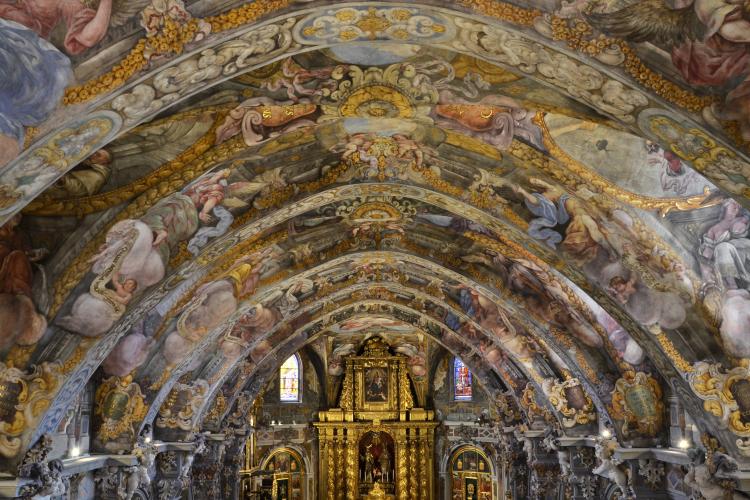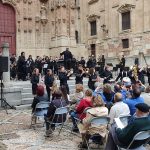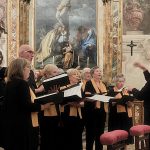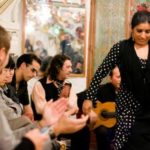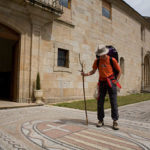Every day choirs, bands and orchestras ask us for special places where they can delight their local audience with their musical performance. In this post we talk about eight beautiful places in big cities and picturesque villages in Spain.
Pantheon of San Isidoro of León
Fernando I and Sancha I of León promoted the construction of the Basilica of San Isidoro in the city of León, rebuilding it over a previous church. Its foundation took place under the invocation of San Juan Bautista, but the change of denomination on December 21, 1063 was motivated by the transfer of the relics of Isidoro de Sevilla, recovered by the kings. In addition, the function of the new temple was also to serve as a Royal Pantheon for the León Monarchy.
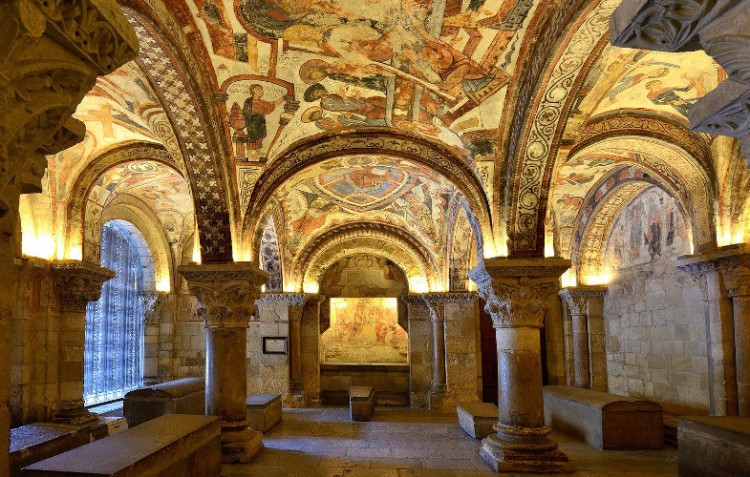
The daughter of the founding kings, Urraca de Zamora, commissioned the decoration of the pantheon of San Isidoro. Her frescoes, through their vivid colors, managed to make the invisible possible, expressing the faith of the society and the biblical teachings. Without knowing who was the author or authors of what is known as the Sistine Chapel of the Romanesque, his mastery resulted in a true comic in which the main milestones of the life of Jesus Christ are reviewed: Birth, Passion and Resurrection.
Hermitage of San Baudelio de Berlanga (Soria)
The province of Soria is one of the most unknown in Spain, but its geography has true natural and cultural jewels. In the latter group, we can find the Hermitage of San Baudelio de Berlanga, located two kilometers from the historic center of the town of Casillas de Berlanga. In this small chapel are some of the oldest Christian traces of the Iberian Peninsula, since, although its first reference appears in the twelfth century, various studies of its morphology have determined that there could be worship in the last moments of Roman Hispania.
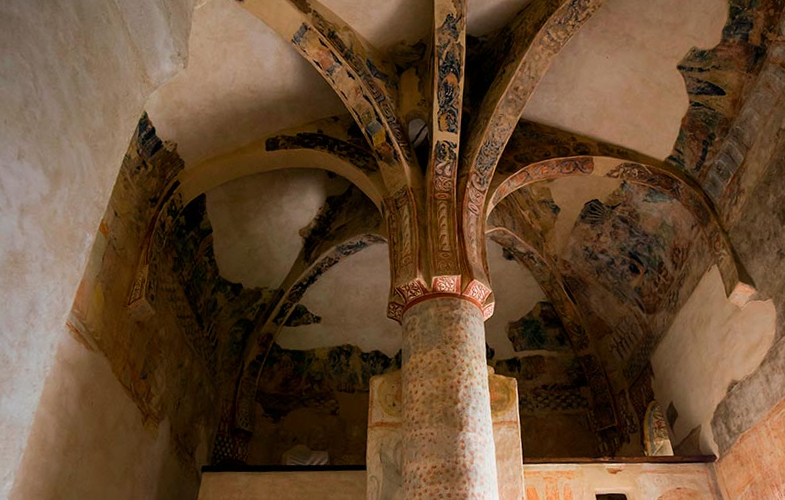
The Hermitage of San Baudelio de Berlanga must have been part of a monastic complex, of which only this small temple survived in the 13th century. In the 19th century, it passed into private hands, and in the 1920s its great interior treasure was taken and sold: the marvelous Mozarabic-style mural paintings that covered its walls and ceilings, nowadays distributed among the Prado Museum and several museums around the world. Undoubtedly, one of the saddest plundering events in our history, since, in addition, Mozarabic art is only present in Spain. Despite its dispersion and the few paintings still preserved in situ in the hermitage, San Baudelio de Berlanga is still known today as the Sistine Chapel of Mozarabic Art.
Ceiling of the Cathedral of Teruel
The Cathedral of Santa María de Mediavilla, located in the city of Teruel, is one of the most unknown in Spain, but also one of the most surprising and fascinating of the 87 that can be visited throughout the country. This cathedral temple is one of the most interesting of the Aragonese Mudejar heritage, being integrated some elements of its architecture and decoration in the UNESCO World Heritage List, such as the tower, roof and dome.
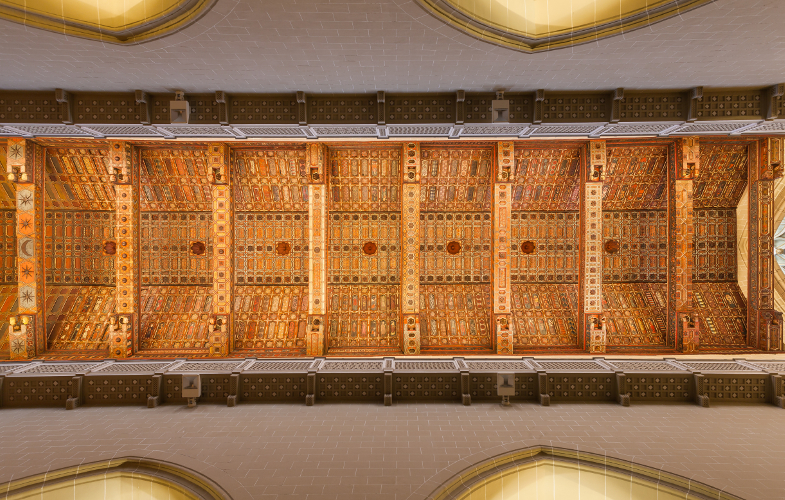
The roof of the Cathedral of Teruel, declared World Heritage, covers the central nave of the church and was built in the 13th century. It is a true jewel of Mudejar art made of wood. Its robust structure is decorated with beautiful paintings that illustrate the society of that time, in which the Christian, Jewish and Muslim traditions tried to coexist in harmony. The Arab-inspired ornamentation is intermingled with Gothic figures typical of the religion of the Latin cross, forming the Sistine Chapel of Mudejar art.
Dome of the Cathedral of Tarazona
A series of restoration works carried out some years ago in the Cathedral of Nuestra Señora de la Huerta, in Tarazona, brought to light another great Sistine Chapel in Aragon, but in this case in Renaissance style. In the dome of the temple were hidden a series of paintings that, in addition to standing out for their artistic quality, were a real discovery because of the subject matter they dealt with. In the pictorial set are represented some of the mythological figures, intermingled with biblical characters.
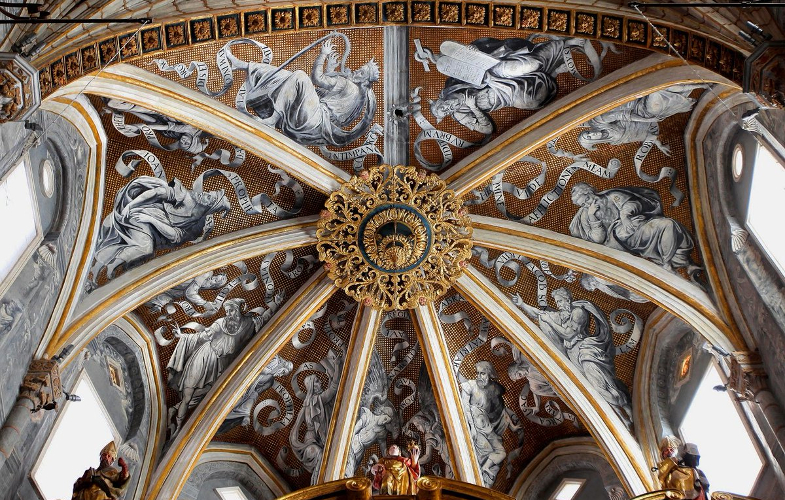
The theme of the Sistine Chapel of the Spanish Renaissance is unique not only in Spain, but also in Europe. Executed by Alonso Gonzalez in the mid-sixteenth century, the dome of the Cathedral of Tarazona confronts through its characters and with its eloquent nudity the extremes of good and evil. However, the Council of Trent caused them to remain hidden, until now that they shine again in all their splendor.
Hermitage of the Virgin of Ara (Badajoz)
In the 15th century, on the outskirts of the town of Fuente del Arco (Badajoz), a sanctuary was built in the Mudejar style in honor of the Virgen del Ara. The small chapel is a center of Marian pilgrimage, but also for art lovers. Its single nave is covered by a barrel vault, which in the 17th century was decorated with wonderful baroque frescoes that are known today as the Sistine Chapel of Extremadura. Those who doubt this nickname, have only to contemplate its pictorial ensemble to confirm it.

The Ermita de la Virgen del Ara has been declared an Asset of Cultural Interest, and its marvelous paintings had a lot to do with this title. As in the Episcopal Palace of St. Peter in the Vatican, in this Marian sanctuary in Extremadura there are also paintings depicting the Genesis, among others. According to the restorers of the last intervention that was made on the paintings, up to six different artists may have intervened in this wonderful pictorial ensemble.
San Antonio de los Alemanes Church (Madrid)
When you take a tourist route through the center of Madrid to visit its main churches, you should not miss a stop at San Antonio de los Alemanes. Built in the 17th century, it was part of the Hospital de San Antonio de los Portugueses, founded by Felipe III in 1606. It is one of the most important Baroque works in the capital, as well as one of the most outstanding examples of this style in the whole country. Its humble exterior, built in brick and plaster, confuses with the treasure that awaits inside.
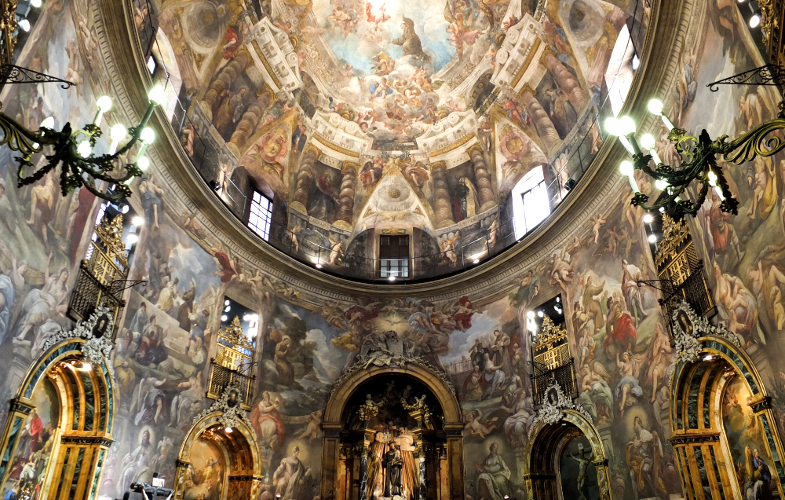
All the walls and ceilings of the Church of San Antonio de los Alemanes are decorated with frescoes. Few are the visitors who do not suffer a stendhalazo when entering this Madrid church and be totally impressed with the amount of paintings they contemplate around them, feeling overwhelmed by such a quantity of art. Luca Giordano, Juan Carreño de Miranda or Francisco Rizi are some of the masters who have been involved in executing this masterpiece that has earned the nickname of Sistine Chapel of the Spanish Baroque. Undoubtedly, a more than deserved title.
Church of San Nicolás de Bari (Valencia)
The rococo and ornate Baroque taste was imposed in the Church of San Nicolás de Bari, located in the historic center of Valencia, whose origins were in the Gothic style. Several artists were involved in the interior redecoration of the temple in the late seventeenth and early eighteenth centuries. All the ceilings and walls of the central nave were painted with spectacular frescoes, whose subject matter was purely religious, delving into Christian teachings and morals.
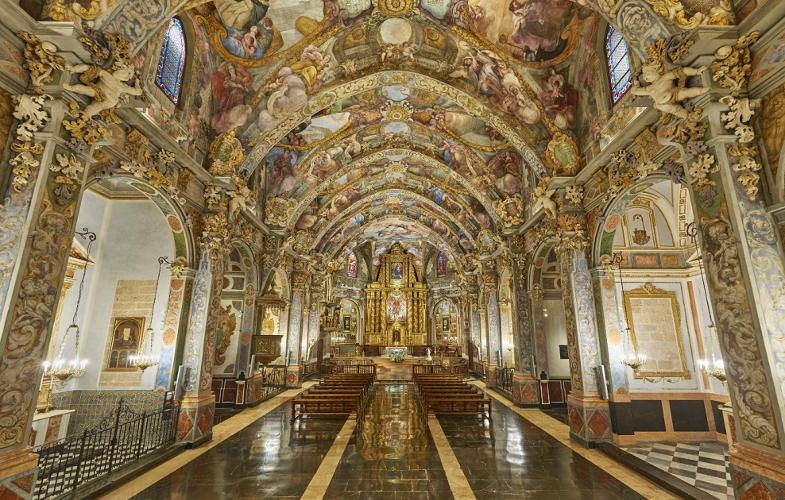
Although the Church of San Nicolás de Bari is very famous among Valencians, its worldwide fame came from the hand of Gianluigi Colalucci, the Italian restorer who carried out its cleaning and tuning between 2014 and 2016 and who was also in charge of the restoration of the Sistine Chapel of St. Peter’s in the Vatican. Once the work was completed, Colalucci did not hesitate to affirm that the frescoes of St. Nicholas of Bari well deserved the adjective of Valencian Sistine Chapel, placing it at the same height of Michelangelo’s masterpiece.
Basilica of the Virgin of Prado
The place where the Basilica of Our Lady of Prado is located, in Talavera de la Reina, has always been linked to religion, dating back to the Roman period. In fact, it is suggested that even during the period of Muslim domination, worship was maintained in a small hermitage, which in the 16th century was replaced by another Renaissance building. King Philip II visited the complex and, according to tradition, defined it as “Queen of the Hermitages”. However, its decoration through local ceramics has also earned it the title of Sistine Chapel of Ceramics.
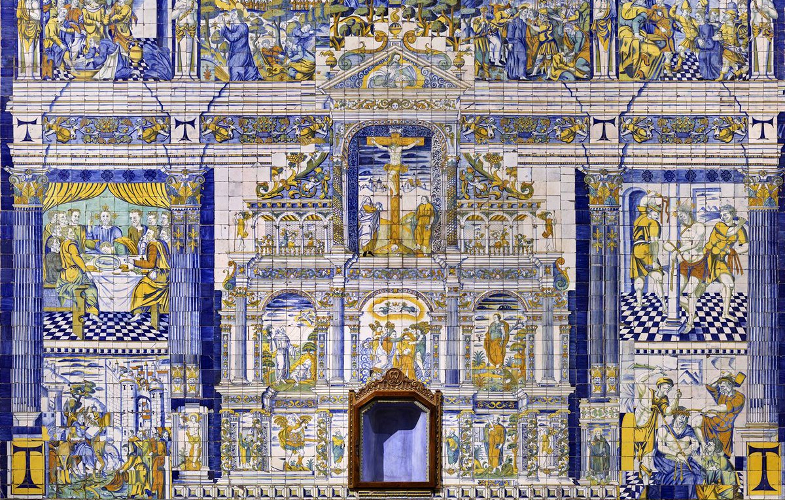
The different ceramic tiles that are distributed throughout the chapel, which was elevated to the title of basilica by John Paul II in 1989, were placed between the sixteenth and twentieth centuries. That is why their styles range from Renaissance, Baroque or Rococo to the purest French taste. Scenes from the life of the Virgin and Christ, of saints or of the temple’s own Marian invocation give shape to this ceramic treasure.
These magnificent examples that we have discovered in this virtual route through different points of the Spanish geography are perfect to demonstrate once again the vast wealth and diversity of heritage that can be enjoyed in Spain.
Would you like to take your orchestra, band or choir to any of these wonderful places? Ask us. info@spainismusic.com

